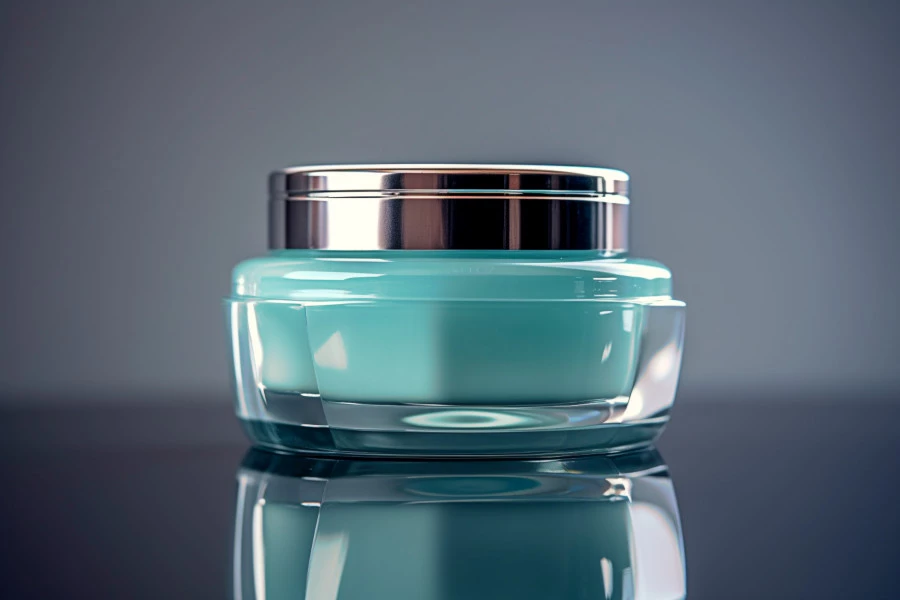Peel back the layers of your skincare routine, and you’ll find it all begins with knowing your unique skin type. Encompassing normal, dry, oily, combination, and sensitive skin, each of the main skin types boasts its own set of attributes and requirements.
Normal skin—the darling of the skin types—lives in harmonious balance, operating at its best with no drama to report.
Dry skin, on the other hand, is constantly seeking moisture, its arid landscape often resulting in a complexion that may appear less than vibrant, with tendencies towards roughness and a parched appearance.
Oily skin has a generous helping of sebum, leading to a skin surface that has a certain gleam and is prone to the pesky occurrence of acne.
Combination skin is the patchwork quilt of the skin types, offering up areas that are dry or oily.
Sensitive skin is the delicate flower of the bunch, prone to blush and react to products, the elements, and other external assailants.
Once you learn how to find your skin type, you’ll be able to embark on a voyage of self-discovery and unlock the secrets of your skin. Then you’ll be on a path that’s destined for skin that isn’t just healthy, but positively glows with vitality.
Here are the main topics we’ll be talking about today:
Your genetic lottery ticket plays a crucial role in determining your skin type. However, external influences like sun exposure, dietary habits, and your daily skincare regimen also help to shape your skin’s portrait.
Welcome to the journey. Let’s get started!
Introducing The 5 Main Skin Types
Decoding your skin type is like discovering the secret ingredient to your recipe for radiant, healthy skin.

Our skin’s oil and water content are like yin and yang, working together to influence its texture, look, and behavior. As unique as your fingerprint, let’s unravel the mystery of the five skin types:
- Normal Skin: The Balanced Beauty
- Dry Skin: Thirsty for Hydration
- Oily Skin: The Glossy Enigma
- Combination Skin: The Best of Both Worlds
- Sensitive Skin: The Delicate Diva
Normal Skin: The Balanced Beauty
Normal skin strides confidently down the middle path of balance, representing an idyllic blend of oil and water.
Neither parched dry nor slick with oil, normal skin is the calm in the storm, rarely erupting into breakouts or showing signs of irritation. It’s your skin’s way of saying, “I’ve got this,” with a smooth texture and a radiant tone that shines evenly.
Read more: Normal Skin: Radiant Skincare Ultimate Guide
Dry Skin: Thirsty for Hydration
Dry skin is running empty on oil, leaving it feeling tight and longing for hydration. Its surface may seem rough, with the occasional flaky patches, leading to a complexion that seems to have lost its glow.
Read more: Dry Skin: Radiant Skincare Ultimate Guide
Dry skin is the wallflower at the party of fine lines and wrinkles, particularly with mature skin, and may find itself grappling with sensitivity to harsh products and climate conditions like biting wind and frigid weather.
Read more: Mature Skin: Radiant Skincare Ultimate Guide
Oily Skin: The Glossy Enigma
Oily skin is like a sebum factory on overdrive, resulting in a sheen that can range from dewy to an outright oil slick.
The T-zone (forehead, nose, and chin) is oily skin’s favorite playground, making it a hotbed for breakouts and acne. Moreover, enlarged pores and a coarser texture can often be an oily skin signature.
Read more: Oily Skin: Radiant Skincare Ultimate Guide
Combination Skin: The Best of Both Worlds
Combination skin is like a terrain with shifting landscapes.
A puzzle of oily and dry patches, combination skin tends to have an oily T-zone, while the cheeks and jawline swing between normal and dry. It’s a tricky one to manage, as it might dance with both acne and dryness, demanding a curated approach when choosing skincare products.
Read more: Combination Skin: Radiant Skincare Ultimate Guide
Sensitive Skin: The Delicate Diva
Sensitive skin is the canary in the coal mine, quick to sound an alarm with reactions when products contain harsh chemicals that other skin types shrug off. It can be dry, oily, or normal, but whatever it is, it likes to express its discontent through redness, itchiness, or burning sensations.
Read more: Sensitive Skin: Radiant Skincare Ultimate Guide
External Factors Influencing Your Skin Type
While your skin type is etched in your genetic code, outside forces like weather, sun exposure, medication, and even the humble humidifier can leave their fingerprints on your skin’s health.

Identifying these silent influencers can empower you to make wise skincare decisions tailored to your skin’s shifting needs:
- Weather: When Mother Nature Flexes Her Muscles
- Sun Exposure: A Double-Edged Sword?
- Medication: The Invisible Influencer
- Humidifiers: Your Stealthy Skin Ally
Weather: When Mother Nature Flexes Her Muscles
Weather can send ripples across your skin’s surface like the changing tides. The chill winds of winter and arid weather may leave your skin feeling more parched, crying out for moisture.
On the other hand, the heat and humidity of summer can ramp up your skin’s oil production, setting the stage for potential breakouts. Hence, it’s key to season-proof your skincare routine to keep your skin in its happy place.
Sun Exposure: A Double-Edged Sword?
Sun exposure can also be a skin type game-changer. While a little sunshine can lift your spirits, overindulgence could leave you with skin damage, signs of premature aging, and even heighten your risk of skin cancer.
To protect your skin from sun exposure, dress it in a protective armor of sun-protective clothing, slather on a high SPF sunscreen, and limit your sunbathing sessions to keep the skin woes at bay.
Medication: The Invisible Influencer
Medications can play puppet master with your skin. Acne medications could leave you with a trail of dryness and flakiness, while hormonal medications might result in excess oil production and breakouts.
Consult your physician or dermatologist if you suspect your medication might be stirring up a skin storm.
Navigating the landscape of external factors influencing your skin, regardless of its type, can help you stay one step ahead in your skincare journey. By tuning your routine to your skin’s changing song, you can ensure your skin remains the picture of health, glowing with radiance.
Common Skin Concerns: Your Skincare Crusade
Navigating the skin terrain, regardless of your skin type, may mean tackling a few common skin bugbears: enlarged pores, blackheads, red patches, pimples, visible pores, and visible lines.

Let’s dissect each concern, unearthing the why’s and how’s, and give you the superpowers to face them head-on:
- Enlarged Pores: It’s All About Perspective
- Blackheads: Crash the Uninvited Party
- Red Patches: Reading the Red Signals
- Pimples: End the Breakout Breakdance
- Visible Pores: Your Skin’s Open Secret
- Visible Lines: Chronicles of Your Skin’s Voyage
Enlarged Pores: It’s All About Perspective
Enlarged pores can feel like a magnifying glass highlighting your skin struggles, especially if you have oily skin.
When pores are congested with oil and dead skin cells, they throw a spotlight on themselves. Consider incorporating a good facial toner with salicylic acid into your routine. It’s like a cleanup crew, mopping up excess oil and discouraging pore blockage.
Blackheads: Crash the Uninvited Party
Blackheads can often feel like the plus-ones nobody invited to your skin party. They pop up when oil and dead skin cells clog your pores and oxidize, putting on a black-tie event.
To address blackheads, facial cleansers with salicylic acid, can be your bouncer, keeping the oiliness of your skin in check and showing blackheads the exit!
Red Patches: Reading the Red Signals
Red patches can be the red flags waving from your skin, signaling conditions like rosacea, eczema, or psoriasis.
To tackle red patches, you’ll need to play detective, pinpointing the root cause and addressing it head-on. For instance, if rosacea is the culprit, reach for a gentle cleanser and steer clear of known triggers like spicy foods and alcohol to dampen the redness.
Pimples: End the Breakout Breakdance
Pimples, those impromptu skin breakdancers, can turn up in the lives of many, teens in particular. They hold the stage when oil and dead skin cells block pores and roll out the red carpet for bacteria.
To break the breakout cycle, look for products with salicylic acid, and consider a spot treatment with benzoyl peroxide—a backstage pass to reducing inflammation and waving goodbye to bacteria.
Visible Pores: Your Skin’s Open Secret
Visible pores can seem like your skin’s tell-all, particularly for the oilier skin types. To quieten the whispers of visible pores, a facial toner with salicylic acid can help you take oiliness down a notch and prevent your pores from getting stage fright.
Visible Lines: Chronicles of Your Skin’s Voyage
Visible lines, akin to a treasure map of your skin’s journey, often tell tales of aging and sun damage. To chart a new course, protect your skin from future UV tales with sunscreen and mindful sun exposure.
A moisturizer with retinol or hyaluronic acid can also help rewrite the narrative of fine lines and wrinkles.
Tackling these common skin concerns—be they enlarged pores, blackheads, red patches, pimples, visible pores, or visible lines—might mean reaching for a gentle exfoliating scrub once or twice a week. This helps to evict dead skin cells and unclog pores.
By keeping your skin clean and exfoliated, deploying targeted treatments, and shielding your skin from further stories of damage, you can turn the page on these concerns. After all, your skin is your story to tell!
Sun Protection: Shield Your Skin from UV Rays
Skin cancer currently tops the charts as the most prevalent cancer type in the United States, largely due to exposure to the sun’s ultraviolet (UV) rays or the artificial sunlight of tanning beds.

Keeping your skin safe from the sun is critical in diminishing your skin cancer risk:
- UV Rays: The Silent Saboteurs
- Broad-Spectrum Sunscreen: Your Skin’s Loyal Guardian
- Your Wide-Brimmed Hat: The Chic Sentinel
- Sunglasses: Visionary Protectors
UV Rays: The Silent Saboteurs
UV rays take center stage as the chief instigators of skin cancer. They wreak havoc on your skin cells’ DNA, causing mutations that potentially turn cancerous.
UV rays flex their might between 10 a.m. and 4 p.m., making it a wise choice to sidestep direct sunlight during these peak UV hours. If outdoor activities call your name during this time, armor up in the shade or don protective clothing.
Broad-Spectrum Sunscreen: Your Skin’s Loyal Guardian
A broad-spectrum sunscreen is like a trusted friend who stands by your skin, throwing a protective arm against both UVA and UVB rays.
Seek a sunscreen boasting an SPF of 30 or higher and lavishly slather it onto all sun-exposed skin. Reapplication every two hours—or post-swim or sweat session—is key. And don’t be fooled by cloudy days; UV rays can sneak past the cloud cover, making sunscreen an all-weather ally.
Your Wide-Brimmed Hat: The Chic Sentinel
A wide-brimmed hat is not only a fashion statement but a sensible skin shield, offering extra protection to your face, neck, and ears. Opt for a hat sporting a brim of a minimum three inches. An added bonus: hats also help maintain a cool head, fending off heat exhaustion.
Sunglasses: Visionary Protectors
Sunglasses are more than mere fashion accessories. They’re on a mission to protect your eyes from UV rays, thus cutting down your risk of cataracts and other eye conditions.
Aim for sunglasses that promise to block 100% of UVA and UVB rays. Wraparound sunglasses earn extra brownie points as they block rays that try to sneak in from the sides.
Incorporating these sun protection strategies into your skin care routine, you’re girding up your skin against the risk of skin cancer and promoting healthy, radiant skin.
Always remember: seek shade, deck yourself in protective clothing, stand by your broad-spectrum sunscreen, tip your wide-brimmed hat, and sport sunglasses that ward off UV rays. Your skin will thank you!
Product Selection and Hydration: A Winning Duo
An integral part of skincare is the selection of suitable products and their strategic application to achieve optimal hydration.

At the heart of the skincare balance are a few key players:
- Moisturizer: The Elixir of Skin Hydration
- Non-comedogenic Products: The Unsung Heroes of Clear Skin
- Hydration: The Well of Skin Vitality
Moisturizer: The Elixir of Skin Hydration
Moisturizers are indispensable soldiers in your skincare army, irrespective of your skin type. It is your skin’s trusted ally, preventing dehydration, and warding off dryness and flakiness.
Dry skin types may find solace in a thicker moisturizer, whereas those with oily skin might favor a lighter, oil-free formulation.
Selecting a moisturizer requires due diligence, ensuring it hosts ingredients that are hydration champions. Popular hydration heroes include hyaluronic acid, glycerin, and ceramides. They work their magic by luring moisture to the skin and trapping it there, providing long-lasting hydration throughout the day.
Non-comedogenic Products: The Heroes of Clear Skin
Non-comedogenic skincare products are vital allies if you’re dealing with acne. Such products are formulated with a no-nonsense approach—they simply won’t clog pores, thus reducing the risk of acne flare-ups.
To find a non-comedogenic moisturizer, scan product labels for terms like ‘oil-free’ or ‘lightweight’. These formulations are less likely to clog your pores, making them an ideal recruit if you have acne.
Hydration: The Well of Skin Vitality
Hydration stands as the linchpin of maintaining a healthy, radiant skin complexion. Apart from employing a moisturizer, there are other battle strategies to ensure your skin stays well-hydrated.
A crucial tactic is to drink ample water throughout the day. It works on a cellular level, hydrating your skin from within. Alternatively, a hydrating serum or moisture mist can give your skin’s hydration levels an extra boost.
Equally important is to steer clear of harsh or drying skincare products that rob your skin of its natural oils, triggering dryness. Favor gentle, hydrating formulations that pledge to keep your skin nourished and healthy.
Handpicking the right skincare products and championing hydration is the masterstroke for healthy, glowing skin. By integrating a moisturizer into your daily regimen, opting for non-comedogenic products, and upholding proper hydration, you’re setting the stage for radiant skin.
Photosensitivity: Decoding Sun Reactivity
Understanding how sensitive your skin is to the sun is crucial for maintaining its health and beauty.

A valuable tool for this understanding is the Fitzpatrick skin phototype, which can help you appreciate how sensitive your skin is to the sun:
- The Fitzpatrick Skin Phototype: Your Position on the Sun Spectrum
- Photosensitivity: Understanding Your Skin’s Light Sensitivity
The Fitzpatrick Skin Phototype: the Sun Spectrum
The Fitzpatrick skin phototype offers a systematic approach to classifying skin types according to their reaction to sunlight exposure. Conceived by Dr. Thomas B. Fitzpatrick in 1975, it’s a widely embraced tool in dermatology. The system considers skin colors, sun sensitivity, and the skin’s inclination to tan or burn.
The Fitzpatrick skin phototype spans six categories, from type I (extremely fair skin that readily burns and never tans) to type VI (extremely dark skin that never burns but always tans). Identifying your skin phototype helps discern your sun exposure tolerance and guides the selection of suitable sun protection methods.
Read more: Fitzpatrick Skin Type: Comprehensive Guide
Photosensitivity: Understanding Light Sensitivity
Photosensitivity is a phenomenon where the skin reacts unusually to sunlight or artificial light exposure. It can trigger a gamut of symptoms, ranging from mild redness and itchiness to intense blistering and scarring. Photosensitivity can be provoked by an array of triggers, including medications, medical conditions, and genetic predispositions.
Individuals with extremely fair skin (Fitzpatrick skin type I) are notably prone to photosensitivity, as are those with specific medical conditions like lupus and porphyria. Certain medications, including antibiotics and chemotherapy drugs, can also elevate your photosensitivity risk.
Shielding your skin from photosensitivity involves curtailing your exposure to sunlight and artificial light sources. Don protective clothing and employ a broad-spectrum sunscreen with an SPF of 30 or higher. If your medication escalates your photosensitivity risk, consult your healthcare provider about potential strategies to safeguard your skin while continuing your medication regimen.
Gaining insights into your skin phototype and implementing steps to shield your skin from photosensitivity can thwart sun damage and skin cancer. By adhering to these simple guidelines, you can safely relish the sun while preserving your skin’s health and radiance.
Ethnicity: Skin Types Around the World
Skin types vary among individuals, with ethnicity significantly influencing skin type determination. The quantity and variety of melanin in your skin define its type.

Ethnicity can sway your skin’s sensitivity, texture, and predisposition to skin conditions. Thus, it’s crucial to grasp various skin types and their traits to formulate the optimal skincare regimen:
- Fair Skin: The Gentle Performer
- Black Skin: The Enduring Maestro
- Mediterranean Skin: The Sun-Kissed Monarch
Fair Skin: The Gentle Performer
Fair skin is prevalent among individuals of European lineage. It presents a light complexion and is highly prone to sunburns. Low melanin content makes people with fair skin more susceptible to UV-induced skin damage.
Individuals with fair skin also have a higher likelihood of developing skin cancer. Thus, incorporating high-SPF sunscreen and curbing extended sun exposure is pivotal.
Black Skin: The Enduring Maestro
Black skin is typical among individuals of African descent. It spans a broad array of skin tones, from dark to light, characterized by high melanin levels. Melanin proffers innate protection against the sun’s harmful UV rays, rendering black skin less susceptible to sunburns and skin cancer.
However, black skin is vulnerable to hyperpigmentation, which may result from acne, eczema, or other skin conditions, leading to increased melanin production and resultant skin darkening. Thus, employing sunscreen and sidestepping abrasive skincare products that may induce skin irritation is vital.
Mediterranean Skin: The Sun-Kissed Monarch
Mediterranean skin is common among individuals of Mediterranean descent. It exhibits a light to olive complexion, accompanied by moderate melanin levels.
Individuals with Mediterranean skin are less prone to sunburns than fair-skinned individuals but are still at risk of sun damage and skin cancer. Hence, using sunscreen and limiting prolonged sun exposure is vital.
Recognizing these skin types is integral to establishing a personalized skincare routine. Ethnicity significantly impacts skin type determination, and this should be considered when selecting skincare products. Employing sunscreen and shunning harsh skincare products will help preserve a healthy and radiant skin, irrespective of your ethnicity.
Celebrate Your Radiant, Glowing Skin Type

Grasping the diversity of skin types allows you to pick the appropriate skincare products and devise a skincare routine tailored to your distinctive skin needs.
As outlined earlier, there are five primary skin types: normal, dry, oily, combination, and sensitive. Each of these skin types exhibit specific traits that necessitate unique skincare strategies.
It’s worth noting that skin types can transition over time due to factors like aging, hormonal shifts, and environmental influences. Therefore, it’s crucial to regularly evaluate your skin type and modify your skincare routine accordingly.
Beyond identifying your skin type, it’s crucial to be mindful of your skin’s overall quality, evaluated via parameters like texture, tone, and elasticity. Utilizing objective tools, such as clinical rating scales and skin imaging techniques, can assist in this process.
In conclusion, investing time to understand skin types and determining your unique skin type can significantly contribute to achieving healthy and radiant skin. By selecting suitable products and establishing a personalized skincare routine, you can maintain your skin in its prime condition for years ahead.
Frequently Asked Questions
Here are some of the most commonly asked questions about the main skin types (and the answers!):
- What is Normal Skin Type?
- How Do I Care for Dry Skin?
- Is Oily Skin a Bad Thing?
- How Can I Manage Combination Skin?
- How Do I Know If I Have Sensitive Skin?
- Can Lifestyle Habits Affect My Skin Type?
- Does Skin Type Vary Between Men and Women?
- How Often Should I Adapt My Skincare Routine to My Skin Type?
- Is It Normal to Have More Than One Skin Type?
- How Do I Treat Different Skin Types on Different Areas of My Face?
- Can I Change My Skin Type?
- Why is My Skin Oilier in Summer and Drier in Winter?
- Does Aging Affect My Skin Type?
- Can Food Allergies Affect My Skin Type?
- Is There a Quick Fix to Changing My Skin Type?
Bear in mind that each person’s skin is as individual as they are. A product or method that suits one person may not have the same effect for another. If in doubt about your skin’s needs or health, seeking advice from a dermatologist is always a good idea.
What is Normal Skin Type?
Normal skin is characterized by a well-balanced level of moisture, good elasticity, a healthy complexion, and few breakouts. It’s not too dry and not too oily, making it the most balanced among skin types. However, even those with normal skin should follow a good skincare routine to maintain their skin’s health.
How Do I Care for Dry Skin?
Dry skin often feels tight, rough, or flaky and can be prone to irritation. Caring for dry skin involves keeping it well-hydrated and protected. Use gentle, moisturizing cleansers, and apply a good moisturizer after washing while the skin is still damp to lock in hydration.
Is Oily Skin a Bad Thing?
Not necessarily! While oily skin might be more prone to breakouts due to excess sebum production, it also tends to age slower than other skin types. It’s crucial to maintain a skincare routine that includes cleansing, toning, and moisturizing with products specifically formulated for oily skin to help balance oil production without stripping the skin.
How Can I Manage Combination Skin?
Combination skin is characterized by a mix of skin types on different areas of the face – usually, oily in the T-zone and normal or dry on the cheeks. The key to managing combination skin is balance. Use products that can address both oiliness and dryness. You might need to use different products on different parts of your face.
How Do I Know If I Have Sensitive Skin?
Sensitive skin often reacts negatively to skincare products or environmental factors, resulting in redness, itching, burning, or dryness. If your skin frequently becomes irritated or inflamed, you likely have sensitive skin. Always patch test new skincare products before using them, and try to use hypoallergenic, fragrance-free products to minimize reactions.
Can Lifestyle Habits Affect My Skin Type?
Absolutely! Things like diet, stress, smoking, and sleep habits can significantly affect your skin. For instance, a diet high in sugars and fats may lead to oilier skin and breakouts, while chronic stress can exacerbate conditions like acne and eczema.
Does Skin Type Vary Between Men and Women?
Yes, skin type can vary between men and women due to different hormone levels. Men tend to have oilier and thicker skin than women. However, everyone’s skin is unique and may change over time due to age, diet, lifestyle, and environmental factors.
How Often Should I Adapt My Skincare Routine to My Skin Type?
If you notice a significant change in your skin’s behavior, it might be time to reassess your skincare routine. This can be more frequent during times of hormonal change, like puberty, pregnancy, or menopause, or when you experience lifestyle changes.
Is It Normal to Have More Than One Skin Type?
Yes, it’s completely normal! Most people have a combination of different skin types on different areas of their face. For instance, it’s common to have oilier skin in the T-zone and drier skin on the cheeks.
How Do I Treat Different Skin Types on Different Areas of My Face?
When dealing with different skin types on different areas of your face, also known as combination skin, you might need to use different products. For example, you could use an oil-free moisturizer on your oily T-zone and a richer, hydrating moisturizer on your dry cheeks.
Remember, the goal is to balance your skin, addressing both dry and oily areas effectively. Always be gentle with your skin, and make sure to monitor how it responds to the different products and adjust your routine as needed.
Can I Change My Skin Type?
While your skin type is primarily determined by genetics, certain factors like aging, climate, hormones, and lifestyle can influence it.
While you can’t change your skin type, you can manage and improve its health and appearance. Adopting a skincare routine that suits your skin type, leading a healthy lifestyle, and protecting your skin from sun damage are all crucial steps.
Why is My Skin Oilier in Summer and Drier in Winter?
Seasonal changes can affect your skin. Higher temperatures and humidity in summer can stimulate sebaceous glands to produce more oil. In contrast, cold air and indoor heating in winter can strip away your skin’s natural moisture, leading to dryness. You might need to adjust your skincare routine to the changing seasons.
Does Aging Affect My Skin Type?
Yes, as you age, your skin also changes. Mature skin often becomes drier due to a decrease in oil production. The skin might also become more sensitive or develop conditions like rosacea or adult acne. Therefore, it’s important to reassess your skin type and skincare routine as you age.
Can Food Allergies Affect My Skin Type?
Food allergies can cause various skin reactions, including hives, itchiness, swelling, or even anaphylaxis in severe cases. However, they don’t directly affect your skin type. But if you notice that certain foods cause skin problems, it’s a good idea to avoid them.
Is There a Quick Fix to Changing My Skin Type?
While there are ways to manage different skin types and improve the health of your skin, there’s no quick fix for changing your skin type, as it is mainly determined by genetics. The most effective strategy is to adopt a skincare routine that is suitable for your skin type, use products that enhance your skin’s health, and lead a healthy lifestyle.
Remember, knowing your skin type is the first step in effective skincare. The next step is understanding how to care for it properly, so you can have the healthiest skin possible!